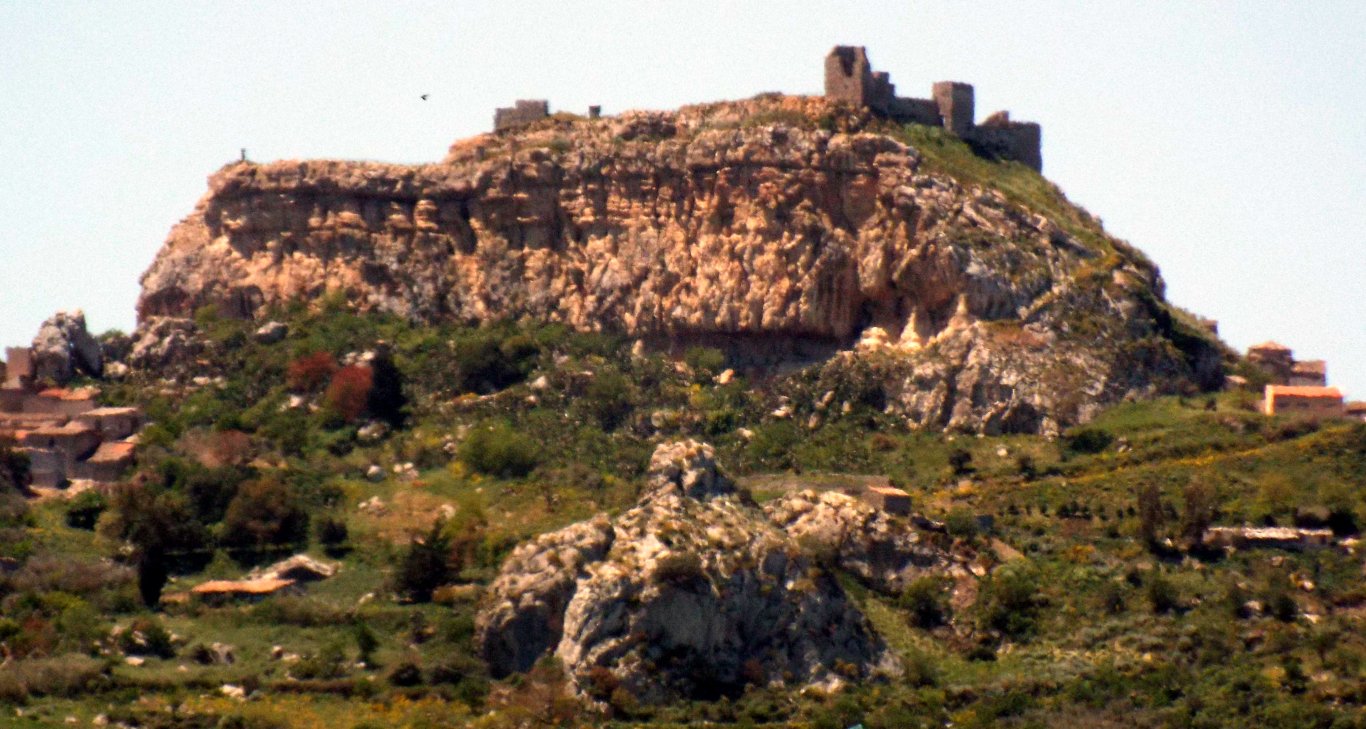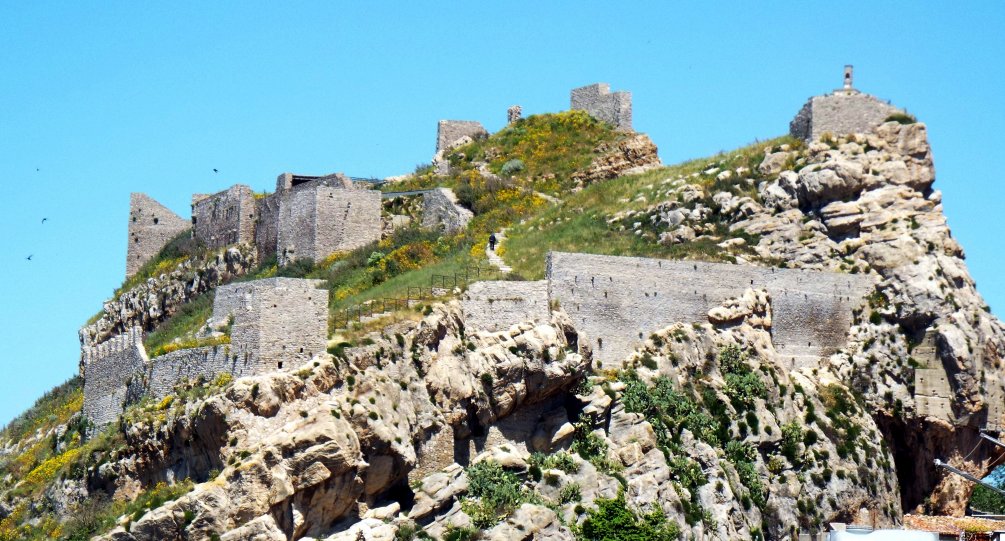Vicari

Before 1154 Idrisi notes that Vicari (Biku) was a rock castle (hisn) as well as a fortress and had an abundance of water in its productive lands. When the revolt of Messina
shook the
kingdom
in 1168, Vicari was one of the places who promised to send troops to
the king to put down the insurrection. The loyalty of the
garrison was seen again in 1194 when the castle was one of only 4 that
remained loyal to King William III and his mother before they surrendered to Henry VI (1194-97) in December 1194. It then became a Hohenstaufen stronghold.
The castle passed to the Angevin King Charles after he overthrew King Manfred in 1266. In 1271 Vicari castle was
given to Joscelin Venetiis. It was recorded in 1272 that the
garrison was to consist of 1 knight or squire, backed by 20 sergeants.
This made it one of the most powerful Angevin garrisons, although nowhere near as powerful as Messina or Enna.
With the commencement of the Sicilian Vespers on Monday, 30 March
1282, the men of Palermo fell on the French in the city and put to
death all they could find. The justiciar of Palermo, John St
Remy, tried to defend the royal palace, but wounded in the face and
hopelessly outnumbered, he and his men fled the 26 miles to Vicari
castle. There he was reinforced by other survivors. The
next day the men of Palermo arrived before the castle. If this is
true, they must have been a cavalry force too. Seeing the size of
the army, St Remy offered to surrender if they could pass to the coast
and disembark for Provence, never to return. At this point
someone in the attacking army shot him dead with an arrow and the rest
of the garrison were then massacred. Presumably the rebels then garrisoned the fortress.
After King Peter (d.1285) had assumed control of Sicily that September 1282, he
wrote asking the inhabitants of Vicari to choose 2 men to come to
Palermo to take an oath of loyalty to
him. The castle was held by Blasco Lancia in 1296.
Presumably he was a son of Galeotto Lancia who was beheaded in Naples
in 1268. Blasco would seem to have died soon after 1296.
In either 1299 or 1300 Vicari castle was
entrusted by King Frederick III (1295-1337) to Manfred Chiaramonte (d.1321).
In counterpoise King Charles II of Naples (d.1309), the other claimant
to the throne of Sicily, offered it simultaneously to Virgil of Catania, but he
never managed to take it. On Manfred's death
the castle seems to have been reclaimed the King Peter II (1337-1342). Around 1338, King Peter granted Vicari, together with Godrano, to Francesco
Valguarnera and his heirs. In 1348, at the death of the regent,
Duke John of Athens (the son of King Frederick (d.1337) and Eleanor
Anjou (d.1341), during the minority of his nephew, King Louis
(d.1355), hostilities broke out in Palermo between the Latins and
John's favoured Catalan faction. The unsuccessful Catalans then
took refuge in the castles of Vicari and Cefala and raided towards
Palermo. As a consequence Frederick Valguarnera of the Latin
party was sent to take Vicari while Cefala was simultaneously attacked. Presumably Frederick was a relative, if not the same as, the Francesco Valguarnera of 1340.
In 1393 riots occurred in Marsala, Mussomeli, Misilmeri and Vicari
which lead to an insurrection against the Aragonese. Not being
able to subdue the insurrection, in 1396 King Martin (1392-1409)
pardoned the rioters, but reclaimed as royal domain the castles of
Caccamo, Castronovo, Misilmeri and Vicari. He then held the
castle unitl 1408 when he granted it to Simon Valguarnera, the nephew
of the Francesco mentioned in 1338. In the same year Simon sold
it for 1000 gold onzes to Gilbert Talamanca. Eventually it ended
up with the Ventimiglia family and in 1556 King Philip II (d.1598) made
the castle the seat of a county. The castle was then held by the
Bosco Agliatas until 1722 and was a ruin when feudalism was abolished
in 1812.

The castle is set on the spine of a ridge in typical Byzantine fashion
which mirrors the castles of Aci, Calatabianco, Castelmola, Castronovo, Cefala Diana, Rometta, Sperlinga and Taormina. The defences consist of low walls on the inaccessible
sides to east and west, while on the approach to the north is a stronger wall
with towers. To the south are a series of defences on the most
approachable side. The site is 820' long and up to 100'
wide. Entrance was gained via a ramp with 2 gates to the
south. The main gate was protected to the east by a rectangular
tower. This has been restored recently, being reroofed and having
metal steps put in to first floor level. Commanding this is
another tower to the north whose remaining east face has ogival
doorways at ground and first floor level. The low curtain wall
running north from here still has its battlements, every second merlon
being pierced with a loop. Blocking the north end of the site,
the highest and least accessible point of the rock, stand 3 towers
forming the end of the castle. The central one of these is a
rectangular keep. The mural tower to the north has 2 lancet
windows and the remains of a postern and a ladder down the rock.
Other towers were in the northwest corner and the centre of the west wall,
below which seems to have been a cistern. Parts of the ruins are
over 50' high.
Why not join me here and at other Sicilian
castles? Information on this and other tours can be found at Scholarly
Sojourns.
Copyright©2019
Paul Martin Remfry


